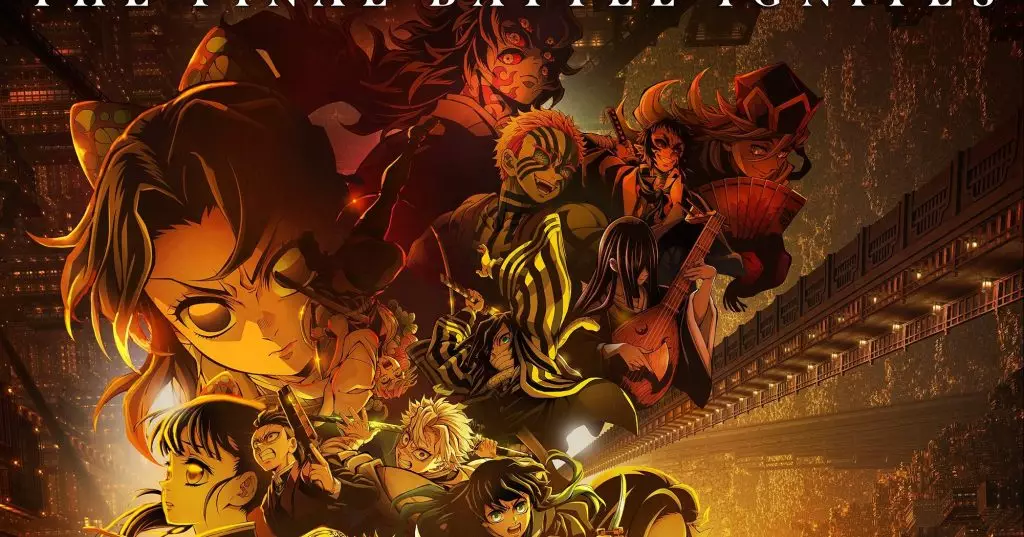The unprecedented box office triumph of “Demon Slayer: Kimetsu no Yaiba – Infinity Castle” in Japan reveals more than just a successful film; it underscores a significant cultural phenomenon that defies Western expectations about anime’s market potential. While many skeptics have long considered anime a niche entertainment form primarily catering to younger audiences, the latest figures demonstrate a shift, portraying anime as a dominant force capable of rivaling big-budget Hollywood blockbusters. This surge is not merely a testament to the franchise’s dedicated fanbase but also an indication of a broader societal acceptance and even celebration of Japanese cultural exports on a global scale.
What stands out is not just the high figures but the quality of engagement—record-breaking single-day gross, massive attendance, and record-setting IMAX revenue. These milestones suggest that anime is carving out a space where storytelling, visual spectacle, and cultural identity intersect to create a compelling, almost universal appeal. While usual blockbuster movies often saturate Western markets with predictable narratives, anime-driven films like “Infinity Castle” offer a distinctive blend of artistic mastery and culturally rooted storytelling, resonating with both local and international audiences.
The Cultural Significance of Domination in a Competitive Market
The towering success of “Infinity Castle” and its rapid ascension toward being one of the top grossing films of the year in Japan signifies more than just commercial achievement; it signals a cultural shift in societal values and entertainment preferences. This film’s capability to topple traditional Hollywood heavyweights—particularly in a market like Japan—indicates a subtle but profound realignment of cultural influence.
Here, we observe a phenomenon where Japanese storytelling, animated by both tradition and innovation, increasingly eclipses Western narratives for domestic consumption. This phenomenon challenges the long-standing dominance of Hollywood and notions that Western-produced content is inherently superior or more globally appealing. Instead, the Japanese film industry, powered by anime, is asserting a cultural confidence on par with, if not surpassing, Western cinema, subtly shifting the cultural power balance.
Furthermore, “Infinity Castle” strikes a chord not just domestically but internationally, with scheduled global releases. Sony and Crunchyroll’s investment and strategic push reveal a recognition that anime success isn’t confined within Japan’s borders anymore; it is a global phenomenon. This internationalization of anime, and specifically this film, signifies a cultural renaissance that promotes Japanese storytelling as globally relevant—and it creates an opening for Western audiences to re-evaluate their perceptions of fictional worlds.
What This Means for Cultural and Political Perspectives
From a political liberal standpoint, especially centered on cultural diplomacy and soft power, this triumph presents a unique opportunity. It demonstrates that cultural products rooted in a specific national identity can resonate worldwide, strengthening Japan’s cultural influence. However, this largely centers on a globalized entertainment industry that transcends political boundaries, creating a form of soft diplomacy that promotes cultural understanding and curiosity.
On the other hand, the overwhelming success of a Japanese animation film also calls for cautious optimism. While it represents cultural resilience and creative excellence, it should not lead to a disregard for diverse narratives from other regions, especially Western filmmakers who still dominate global markets. It’s a reminder that the cultural landscape is complex: popularity does not eclipse the importance of supporting diverse voices and stories.
This shift also nudges Western markets, particularly Hollywood, to rethink their creative strategies. Relying solely on franchise fatigue or formulaic storytelling risks losing relevance in a landscape where culturally rich, artistically compelling animation is setting new standards. The dominance of “Infinity Castle” suggests that arts rooted in authentic cultural storytelling and high production values can outperform even the most aggressive marketing campaigns.
The explosive run of “Demon Slayer: Infinity Castle” is a clear sign that cultural influence, especially through innovative storytelling and artistic excellence, can reshape global entertainment paradigms. It challenges Western assumptions about dominance in the cinematic and entertainment world, asserting that authentic, culturally rich content has the power to captivate a worldwide audience. As the film’s success continues, it becomes a mirror reflecting a shifting cultural landscape—one where anime is not just a genre but a force capable of inspiring a reassessment of cultural worth, power, and influence on the global stage.

